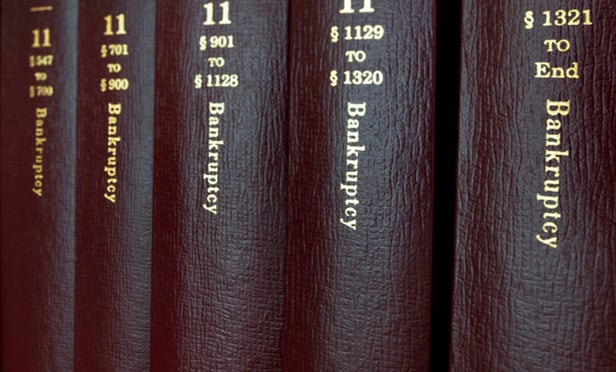Features

Use Tax: The Overlooked Tax of Law Firms
Understanding use tax, a tax imposed on goods or services purchased outside a jurisdiction but used within that jurisdiction, is critical. Use tax is meant to complement sales tax by ensuring that items bought from out-of-state sellers, where sales tax might not be collected, are still taxed.
Features

Legal Leaders Need To Create A High-Trust Culture
In any legal office, leaders set the tone, whether they lead a large or small office. Setting the tone means serving as a role model of trustworthiness and trust. Nothing serves to harm an organization more than a failure of trust, which can raise its ugly head in myriad ways on a daily basis.
Features

Have Corporate DPAs Become Less Certain and Beneficial After Boeing?
Corporate deferred prosecution agreements (DPAs) have become a key part of white-collar criminal enforcement. Once seen as an efficient and definite way to resolve an investigation, have corporate DPAs become less certain and beneficial over time?
Features

Eliminating Judicial Exceptions: The Promise of the Patent Eligibility Restoration Act
The Patent Eligibility Restoration Act (PERA) proposes a solution to a complex debate: What can be patented, and when do nature and thoughts become property? This article provides an overview of the PERA bill, examines the current issues with Section 101 of the Patent Act, the specific proposals of PERA, and the existing pros and cons of the bill.
Features

Real Property Sale Proceeds Must Be Used to Pay Unavoided Portion of IRS Tax Lien First
Given the downward pressure on commercial real estate valuations in many areas, and the increasing likelihood that owners of real property will cease paying real property taxes when there is no longer any equity, this article reports on a recent Ninth Circuit decision that reversed a decision of the bankruptcy court, affirmed by the district court, allocating the distribution of the proceeds of a sale of real property pro rata between the Internal Revenue Service on account of its tax lien, and the bankruptcy estate.
Features

Why Law Firms Are Innovating Document Production In 2025: Security, Sustainability and Efficiency In a Transforming Landscape
The legal industry is undergoing a transformation at an unprecedented pace, driven by two powerful forces: the shift to flexible operations and the rapid acceleration of technology adoption. On top of this, clients, often ahead of their law firm counterparts in leveraging technology, are demanding faster, more secure, and more sustainable ways of working. Together, these may be the greatest operational challenges law firms have faced.
Features

Ruling In Music App’s Contract Breach Complaint Against Apple’s App Store
A California federal court rejected music streaming platform Musi’s request for a preliminary injunction against Apple, after Apple removed the Musi app from Apple’s app store due to copyright infringement concerns.
Features

Appellate Division First Department Declares Fee Mandate of Soho/Noho Rezoning Unconstitutional
This past December, the Appellate Division, First Department struck down a key provision of New York City’s recently amended Zoning Resolution.
Features

Bankruptcy Code Can Present Significant Risks to Lenders
This article discusses two situations where a lender received payments and later was forced to disgorge them. These opinions illustrate two of the ways the bankruptcy code can present significant risks to lenders even after the lender receives payments in accordance with loan agreements or even a court order.
Columns & Departments

Landlord & Tenant Law
Yellowstone Injunction Denied Because Failure to Procure Insurance Is an Incurable DefaultLandlord Bound By Agreement Setting Market Rent At Pandemic Levels
Need Help?
- Prefer an IP authenticated environment? Request a transition or call 800-756-8993.
- Need other assistance? email Customer Service or call 1-877-256-2472.
MOST POPULAR STORIES
- The DOJ's Corporate Enforcement Policy: One Year LaterThe DOJ's Criminal Division issued three declinations since the issuance of the revised CEP a year ago. Review of these cases gives insight into DOJ's implementation of the new policy in practice.Read More ›
- Delaware Chancery Court Takes Fresh Look At Zone of InsolvencyOver a decade ago, a Delaware Chancery Court's footnote in <i>Credit Lyonnais Bank Nederland, N.V. v. Pathe Communications</i>, 1991 WL 277613 (Del. Ch. 1991), established the "zone of insolvency" as something to be feared by directors and officers and served as a catalyst for countless creditor lawsuits. Claims by creditors committee and trustees against directors and officers for breach of fiduciary duties owed to creditors have since become commonplace. But in a decision that may have equally great repercussion both in the Boardroom and in bankruptcy cases, the Delaware Chancery Court has revisited zone-of-insolvency case law and limited this ever-expanding legal theory.Read More ›
- Compliance Officers: Recent Regulatory Guidance and Enforcement Actions and Mitigating the Risk of Personal LiabilityThis article explores legal developments over the past year that may impact compliance officer personal liability.Read More ›
- How Far Can You Reach? The Territorial Limits of Lanham Act Infringement and False Designation of Origin ClaimsOn June 29, 2023, the U.S. Supreme Court set new geographic limits for infringement and false designation of origin claims raised under Sections 1114 and 1125(a) of the Lanham Act. Given the global nature of business today, the decision highlights the need for trademark owners to continually reassess and, perhaps, expand their international trademark registration strategy as product lines and brands become more international in scope.Read More ›
- Use of Deferred Prosecution Agreements In White Collar InvestigationsThis article discusses the practical and policy reasons for the use of DPAs and NPAs in white-collar criminal investigations, and considers the NDAA's new reporting provision and its relationship with other efforts to enhance transparency in DOJ decision-making.Read More ›
